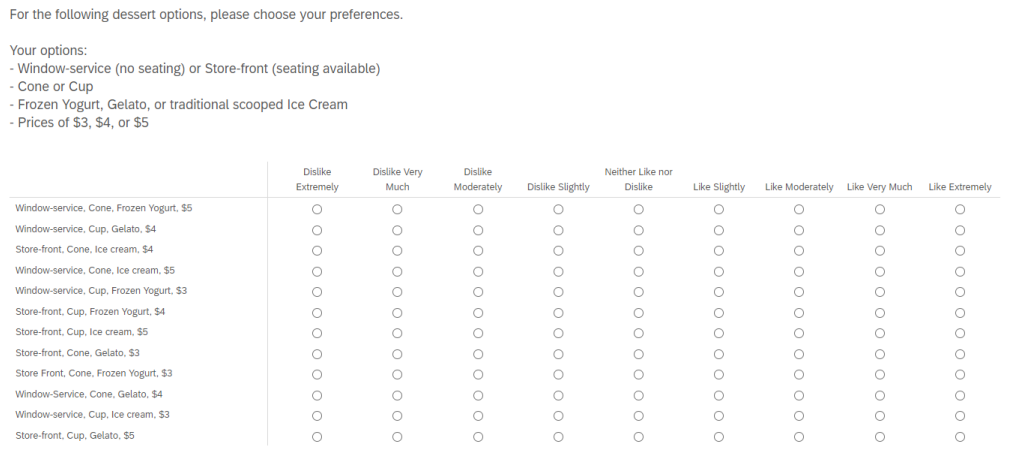Understanding consumer preferences for ice - cream using Conjoint Analysis
Summary
A key marketing goal is to identify and understand consumer preferences - this is useful in determining new product development and developing pricing strategy. Conjoint Analysis is a technique that allows us to accurately understand the choices consumers make in the marketplace. Through a group project, me and my classmates surveyed 10 consumers on their preferences for ice-cream, from which we built market share simulations and understood the best new product to launch.
Data gathering process
Me and my team constructed a survey on Qualtrics, using the fractional factorial experimental design technique. We asked our respondents to respond on a 7 - point Likert scale, to gain an understanding of their preferences.
Analysis to parse out consumer preferences
We presented our customer (in this case, Abby) with various product choices - her responses are on 7 - point scale. We then created dummy codes for categorial variables, so as to prepare the data in the right format to run regressions. This yielded the following results:
Using ordinary least squares (OLS) regressions, we identified the utils (weights) that Abby assigns to various product attributes, like service format, type of ice cream (froyo / gelato / ice cream) and price. Using the weights she assigns to different price points, we are able to plot her price sensitivity. By repeating this activity for each of our 10 respondents, we have an understanding of everyone’s preferences, which sets us up nicely to build a market share simulator.
Building a market share simulator
Using the attributes corresponding to the different product choices, we determine the utility each consumer assigns to each product choice, using which it is possible to determine market share - in this case, product B gathers 60% of market share!
Managerial implications for decision making
Conjoint analysis enables us to gain an understanding of the product attributes that matter most to consumers when making purchase decisions in the marketplace. This provides us strong baseline information to use as guiding context for new product development, and gain an understanding of price sensitivity.




